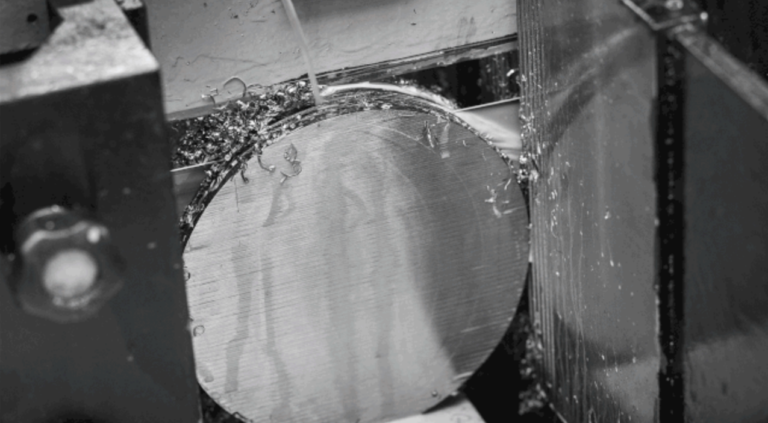
Would you use a circular saw or a band saw for metal cutting?
In the field of metal sawing and processing, when users face the choice of cutting processing method, they often ask a question: “Which processing method is most suitable for my situation? Should I choose a band saw or a circular saw?” If the wrong processing method is chosen, your business will suffer. Development or cost control will be affected in the long term.
Band saw cutting has always been considered the main processing method for metal sawing. Over the years, many subdivisions of this sawing technology have made great progress, such as:
✦Bundled cutting technology, feed control technology using servo drive;
✦Using a reducer motor to achieve low-speed and high-torque sawing main drive technology;
✦CNC technology for repetitive work;
✦High-precision and high-speed carbide band saw blade manufacturing technology;
✦High-precision cutting and processing technology for difficult-to-cut materials.
The above are just some of the features and benefits offered by today’s developments in band saw technology.
If the circular sawing machine is used with good quality cold saw blades, it has the characteristics of high cutting accuracy and high cutting efficiency.
The most basic manual circular saw machine can perform simple, small-batch cutting of a variety of materials, while the automated closed circular saw machine is very suitable for mass production and application scenarios where the material specifications and processing types are relatively single.
Some years ago, the answer to choosing between a circular saw and a band saw was simpler. High-volume, high-volume applications may require the use of a circular saw, while if workpiece accuracy is not critical, an inexpensive band saw may be sufficient. But today, due to the development of band saw technology, the answer is not so clear.
What is certain is that in some application scenarios, the circular saw cutting method is more economical and effective, especially in situations where high processing accuracy and high efficiency requirements are required. Although this equipment is expensive, circular saw cutting with a carbide-tipped cold saw blade can significantly improve cutting efficiency.
However, judging from the current development trends, the application fields of these two cutting technologies have begun to overlap with each other. Discs still offer high-speed and high-precision cutting; in the long run, band saws require less initial investment and have greater flexibility in cutting capacity, multi-layer cutting and bundle cutting methods, and the current high-quality hard A high-quality alloy band saw blade coupled with a good-performance band saw machine may also reach or exceed the workpiece accuracy and production efficiency indicators that only circular saws could achieve in the past. For example, in the cutting application of aluminum ingots, the current trend is to gradually replace circular saw cutting with high-speed band saw cutting.

1. The impact of material type and specification on the cutting methods of band saws and circular saws
Start by asking yourself the following questions:
What is the diameter of the cutting material?
What type and grade of material are you planning to cut?
What materials are most commonly cut?
Should I cut solid material or pipe or both?
Will future projects change requirements?
Are there plans to offer other material models and specifications for new markets?
Generally speaking, the maximum diameter that a circular saw can cut is between 100 and 150mm. If the diameter exceeds 150mm, whether from the perspective of functionality or cost, you should choose a band saw for processing.
Workpieces with diameters between 25 and 100 mm can be processed using either band saws or circular saws. The method chosen depends on various influencing factors. In cold cutting processing, if the workpiece needs to be moved in and out quickly, some common steel types such as medium and low carbon steel, low alloy steel, tool steel, easy-cut stainless steel, and aluminum are more suitable for processing with circular saws, because these materials can Cut quickly by a circular saw without compromising quality due to premature edge wear caused by excessive heat and friction. However, for difficult-to-cut materials such as nickel-based alloys and titanium alloys with low cutting efficiency, more heat and friction will be generated during cutting. When cutting with a band saw with a much larger number of tooth tips (a conventional band saw There are 300 to 400 teeth, while a circular saw only has dozens to hundreds of teeth). Since each tooth tip has a longer “rest” time during operation, this processing method is more conducive to tool control. temperature, so difficult-to-machine materials of this specification are more suitable for cutting with a band saw.
2. Analysis of production demand for circular saws and band saws
In this regard, you need to know the following information:
How many cuts per hour, day, week or month?
Are these long-term, production-oriented, short-term or incidental cuts? Will production demand shift to mass production in the future?
In any case, what is the size, material grade and quantity of material to be cut?
At present, belt cutting technology has developed advanced multi-layer cutting and bundle cutting functions, which can achieve efficient and high-precision cutting of small-sized workpieces. Band saws can rival the productivity of circular saws if multi-layer cutting techniques are used. On a standard circular saw, it only takes 10 seconds to cut each piece of 50mm diameter Q235 round steel. However, if five pieces of 50mm Q235 round steel are placed on the band saw, the band saw can complete the processing in 70 seconds. This cutting efficiency is almost the same as that of circular sawing machines, and may also be able to meet production needs. If a high-quality band saw blade is used on a double-column band saw machine with good rigidity and stability, the band saw tension is set relatively high, and constant control technology of each tooth cutting load is applied for cutting processing, the workpiece tolerance and consistency can also be obtained Great improvement.
Feeding times can also be significantly reduced by cutting in multiple layers or bundles. If cutting in bundles, give careful consideration to your fixture design. In fact, by using special clamps, circular saws can be bundled and cut, but only for cutting workpieces with small diameters. As for cutting larger diameter workpieces in bundles, band saws are still the only choice. Cutting square or rectangular tubes into bundles may only require horizontal clamping, while bundle cutting of round bar stock requires clamping in both vertical and horizontal directions, which in some cases will reduce cutting capacity because the clamps will occupy part of the space in the work area, leaving less space for the materials themselves. Still, the best clamping method is to use both horizontal and vertical clamps to reduce vibration while cutting, as excessive vibration can greatly shorten the life of the tool.
3. Analysis of processing accuracy requirements of circular saw machines and band saw machines
What are the tolerances on length, flatness and consistency of the final product?
Is secondary processing required?
What are the quality specifications for the finished product?
If the accuracy is improved, can secondary processing be eliminated to save processing costs?
If the circular saw machine uses a high-quality cold saw blade, the surface of the cut workpiece will be very smooth and there will be no burrs on the edge of the workpiece. But compared to the current band sawing machine technology, this does not necessarily have any obvious advantages. Now, some high-end band saws use servo-driven ball screw feeding instead of traditional hydraulic feeding, which is also very precise in length tolerance and repeatability control. These ball screws on high-end band saw machines enhance the ability to accurately position materials by increasing machining accuracy during cutting and eliminating backlash after cutting.
4. Analysis of cutting types of circular saws and band saws
Does the material need to be cut at an angle or at an angle? If so, what angle do you need to achieve? What percentage of the workpiece requires corner cuts and bevel cuts? Need to automate these processes?
If a lot of corner cuts are required, it is not feasible to make multi-ply cuts or bunch cuts in a regular horizontal band saw. At this point you can compare the cutting efficiency of circular saws and band saws piece by piece. If you have a limited number of workpieces to corner cut, you can choose a horizontal angle bevel band saw suitable for small size workpieces.
5. Analysis of long-term solutions for circular saws and band saws
Try to look at your current and future cutting needs. Management and purchasing personnel may consider current expenses, while manufacturing and operations personnel may consider the long-term productivity of the machine, and both perspectives are important. Depending on the company’s current financial situation, consider whether it is more important to control upfront purchase costs or the long-term financial return on investment in the machine.
If we compare the input and output of the fully automatic band saw cutting processing method and the fully automatic circular saw cutting processing method, generally speaking, the cost of the former is significantly lower than that of the latter. The most scientific cost evaluation method is to use cost calculation formulas rather than simply comparing equipment prices. When calculating costs, do you need to consider whether it is to be cut in single pieces or in bundles? How many classes are there every day? What is the daily output? Should circular saw blades be resharpened? A large amount of empirical data shows that band saws have a lower cost per square meter of material cut. Taking Q235 material 50mm bar cutting as an example, the band saw cutting cost is about 492 yuan per square meter, while the disc saw cutting cost is about 793 yuan per square meter. However, if circular saw blade regrinding is taken into account, the unit cost of circular saw cutting will gradually decrease with the number of regrindings.
Cost calculations take into account operating costs (including power consumption) and cost per cut (labor and consumables), as well as preparation time. Depending on the processing volume and the other factors mentioned above, you can calculate how long it will take to recoup the initial investment in equipment through increased productivity and cost savings per cut:
It is necessary to understand the production demand trend in the calculation, so that the calculation results will be a good help in measuring the cutting method used to process the product.

